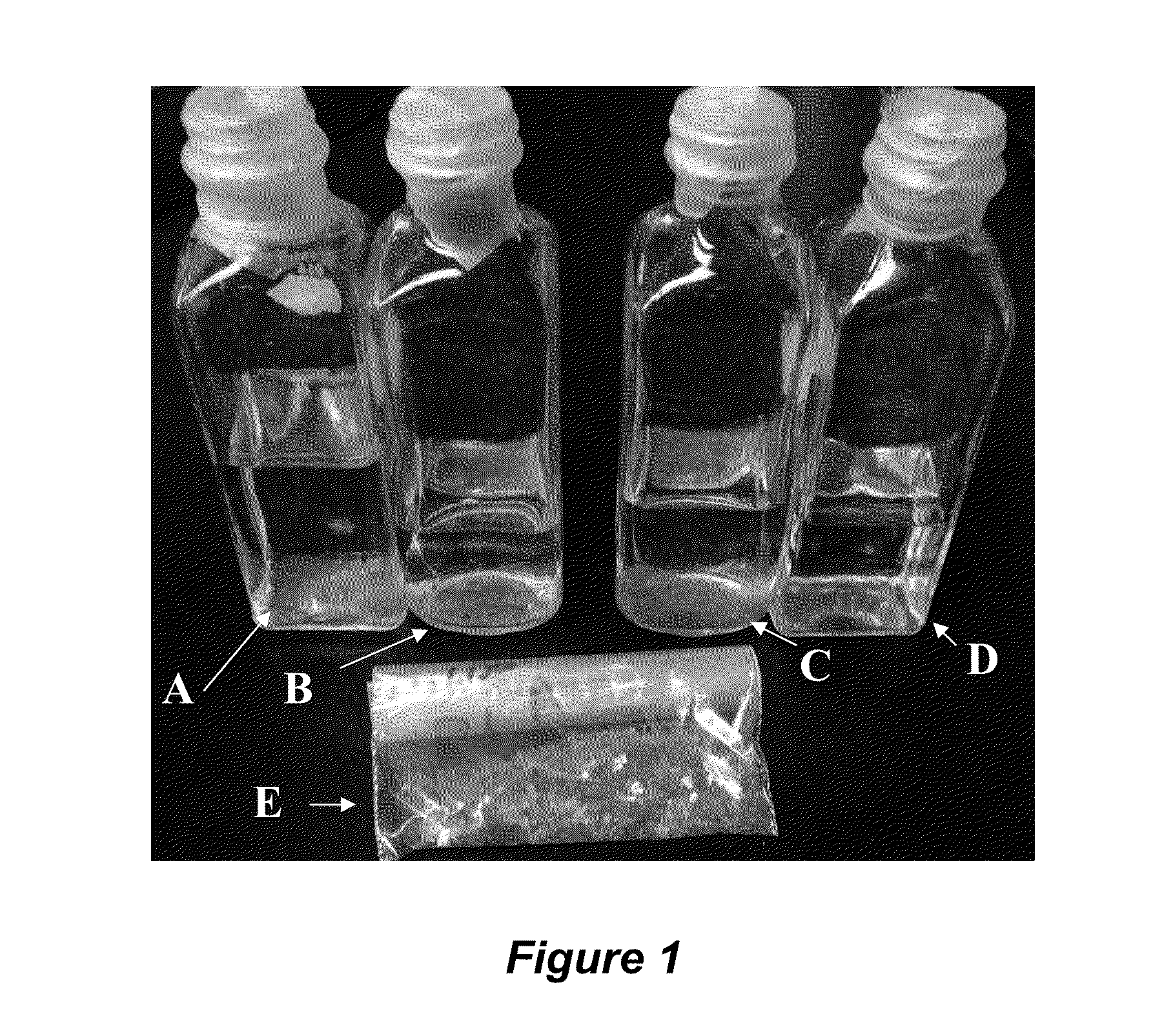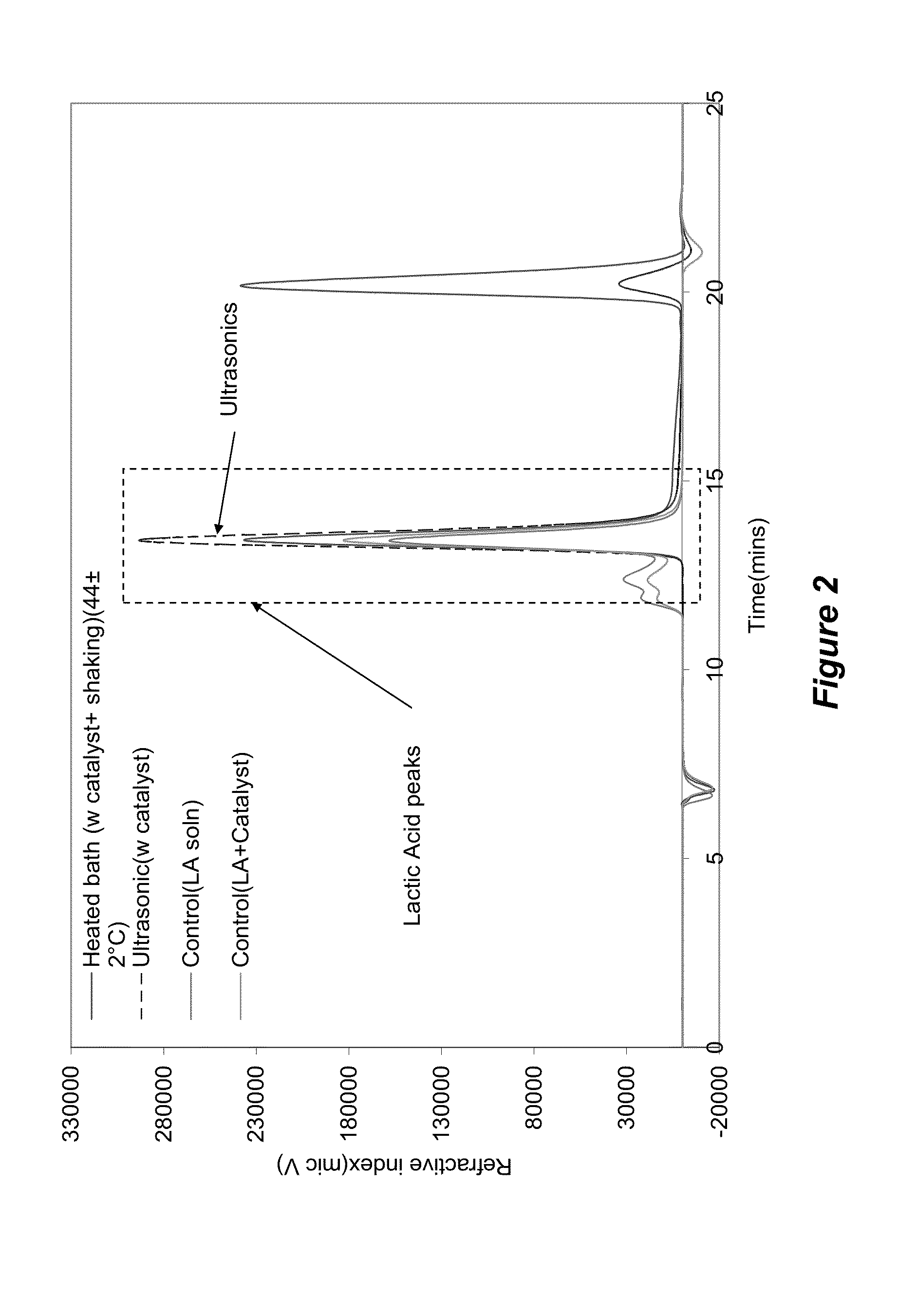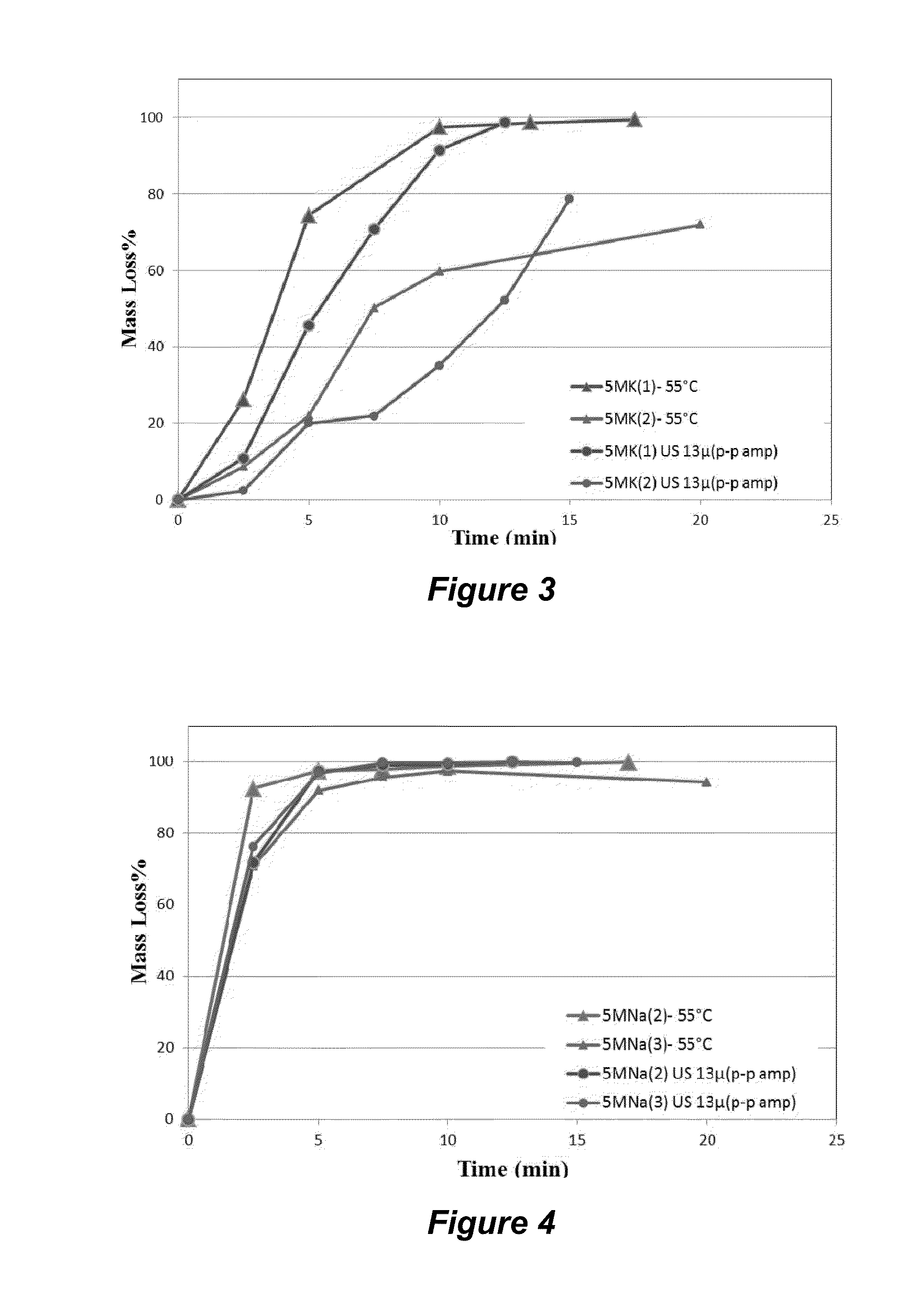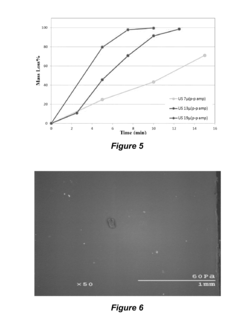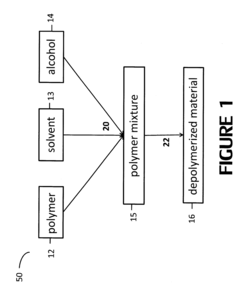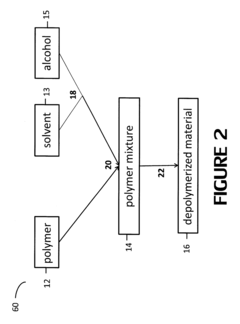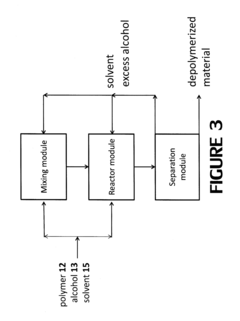How to Build an Effective PLA Marketing Strategy?
JUN 25, 20259 MIN READ
Generate Your Research Report Instantly with AI Agent
Patsnap Eureka helps you evaluate technical feasibility & market potential.
PLA Marketing Evolution
Product Listing Ads (PLA) marketing has undergone significant evolution since its inception, reflecting the dynamic nature of e-commerce and digital advertising. Initially introduced by Google in 2010, PLAs have transformed from simple product listings to sophisticated, visually-rich ad formats that dominate search engine results pages for product-related queries.
In the early stages, PLAs were basic text-based ads with limited product information. As e-commerce grew, these ads evolved to include images, prices, and merchant names, providing a more comprehensive snapshot of products directly in search results. This visual enhancement marked a crucial shift in how consumers interacted with product advertisements online.
The next phase of PLA evolution saw the integration of advanced targeting capabilities. Advertisers gained the ability to bid on specific product attributes, allowing for more granular control over ad placements. This development coincided with the rise of mobile commerce, prompting platforms to optimize PLAs for mobile devices and introduce new ad formats tailored for smaller screens.
As machine learning and artificial intelligence technologies advanced, PLA platforms incorporated these innovations to improve ad relevance and performance. Automated bidding strategies, dynamic remarketing, and predictive analytics became integral components of PLA campaigns, enabling advertisers to optimize their efforts in real-time based on user behavior and market trends.
The expansion of e-commerce marketplaces led to the diversification of PLA channels. While Google Shopping remained a dominant player, platforms like Amazon Advertising and social media networks introduced their own PLA-like formats, expanding the reach and complexity of product marketing strategies.
Recent years have seen a focus on enhancing the user experience within PLAs. Interactive features, such as 360-degree product views, augmented reality try-ons, and shoppable video content, have been integrated into PLA formats. These innovations aim to bridge the gap between online browsing and in-store experiences, addressing consumer desires for more immersive product interactions.
The evolution of PLAs has also been shaped by changing privacy regulations and consumer attitudes towards data usage. Advertisers have had to adapt their strategies to comply with new data protection laws while still delivering personalized ad experiences. This has led to increased emphasis on first-party data utilization and privacy-preserving targeting methods within PLA campaigns.
Looking ahead, the future of PLA marketing is likely to be influenced by emerging technologies such as voice search, visual search, and the integration of PLAs into new digital environments like virtual and augmented reality platforms. As e-commerce continues to evolve, PLAs are expected to become even more interactive, personalized, and seamlessly integrated into diverse shopping experiences across multiple devices and platforms.
In the early stages, PLAs were basic text-based ads with limited product information. As e-commerce grew, these ads evolved to include images, prices, and merchant names, providing a more comprehensive snapshot of products directly in search results. This visual enhancement marked a crucial shift in how consumers interacted with product advertisements online.
The next phase of PLA evolution saw the integration of advanced targeting capabilities. Advertisers gained the ability to bid on specific product attributes, allowing for more granular control over ad placements. This development coincided with the rise of mobile commerce, prompting platforms to optimize PLAs for mobile devices and introduce new ad formats tailored for smaller screens.
As machine learning and artificial intelligence technologies advanced, PLA platforms incorporated these innovations to improve ad relevance and performance. Automated bidding strategies, dynamic remarketing, and predictive analytics became integral components of PLA campaigns, enabling advertisers to optimize their efforts in real-time based on user behavior and market trends.
The expansion of e-commerce marketplaces led to the diversification of PLA channels. While Google Shopping remained a dominant player, platforms like Amazon Advertising and social media networks introduced their own PLA-like formats, expanding the reach and complexity of product marketing strategies.
Recent years have seen a focus on enhancing the user experience within PLAs. Interactive features, such as 360-degree product views, augmented reality try-ons, and shoppable video content, have been integrated into PLA formats. These innovations aim to bridge the gap between online browsing and in-store experiences, addressing consumer desires for more immersive product interactions.
The evolution of PLAs has also been shaped by changing privacy regulations and consumer attitudes towards data usage. Advertisers have had to adapt their strategies to comply with new data protection laws while still delivering personalized ad experiences. This has led to increased emphasis on first-party data utilization and privacy-preserving targeting methods within PLA campaigns.
Looking ahead, the future of PLA marketing is likely to be influenced by emerging technologies such as voice search, visual search, and the integration of PLAs into new digital environments like virtual and augmented reality platforms. As e-commerce continues to evolve, PLAs are expected to become even more interactive, personalized, and seamlessly integrated into diverse shopping experiences across multiple devices and platforms.
PLA Market Demand Analysis
The Product Listing Ads (PLA) market has experienced significant growth in recent years, driven by the increasing shift towards e-commerce and digital advertising. As more consumers turn to online platforms for their shopping needs, the demand for effective PLA strategies has surged among businesses seeking to maximize their visibility and sales in the competitive digital marketplace.
Market research indicates that the global PLA market is expanding rapidly, with a compound annual growth rate (CAGR) projected to remain strong in the coming years. This growth is fueled by the rising adoption of e-commerce across various industries, from retail to consumer goods and beyond. The COVID-19 pandemic has further accelerated this trend, as lockdowns and social distancing measures have pushed more consumers towards online shopping, creating a fertile ground for PLA campaigns.
One of the key drivers of PLA demand is the increasing sophistication of online shoppers. Consumers are now more likely to conduct thorough research before making purchases, comparing prices and product features across multiple platforms. This behavior has made PLAs an essential tool for businesses to capture the attention of potential customers at crucial decision-making moments in their buying journey.
The demand for PLA is particularly strong in highly competitive sectors such as electronics, fashion, and home goods. These industries often have a wide range of products and numerous sellers vying for consumer attention, making PLAs a critical component of their digital marketing strategies. Additionally, the rise of mobile commerce has further boosted the importance of PLAs, as they are well-suited for the limited screen space of mobile devices.
Another factor contributing to the growing demand for PLA marketing is the increasing focus on return on investment (ROI) in digital advertising. PLAs offer a more direct connection between ad spend and sales performance, allowing businesses to track and optimize their campaigns more effectively than traditional display advertising. This measurability and potential for high ROI have made PLAs an attractive option for businesses of all sizes, from small e-commerce startups to large multinational corporations.
The market demand for PLA expertise is also on the rise, as businesses seek professionals who can navigate the complexities of PLA campaigns. This includes skills in product feed optimization, bid management, and performance analysis. As the PLA landscape becomes more competitive, there is a growing need for advanced strategies that can help businesses stand out and maximize their return on ad spend.
Looking ahead, the PLA market is expected to continue evolving, with emerging trends such as the integration of artificial intelligence and machine learning in campaign management. These technologies promise to enhance the efficiency and effectiveness of PLA strategies, further driving demand for advanced PLA marketing solutions.
Market research indicates that the global PLA market is expanding rapidly, with a compound annual growth rate (CAGR) projected to remain strong in the coming years. This growth is fueled by the rising adoption of e-commerce across various industries, from retail to consumer goods and beyond. The COVID-19 pandemic has further accelerated this trend, as lockdowns and social distancing measures have pushed more consumers towards online shopping, creating a fertile ground for PLA campaigns.
One of the key drivers of PLA demand is the increasing sophistication of online shoppers. Consumers are now more likely to conduct thorough research before making purchases, comparing prices and product features across multiple platforms. This behavior has made PLAs an essential tool for businesses to capture the attention of potential customers at crucial decision-making moments in their buying journey.
The demand for PLA is particularly strong in highly competitive sectors such as electronics, fashion, and home goods. These industries often have a wide range of products and numerous sellers vying for consumer attention, making PLAs a critical component of their digital marketing strategies. Additionally, the rise of mobile commerce has further boosted the importance of PLAs, as they are well-suited for the limited screen space of mobile devices.
Another factor contributing to the growing demand for PLA marketing is the increasing focus on return on investment (ROI) in digital advertising. PLAs offer a more direct connection between ad spend and sales performance, allowing businesses to track and optimize their campaigns more effectively than traditional display advertising. This measurability and potential for high ROI have made PLAs an attractive option for businesses of all sizes, from small e-commerce startups to large multinational corporations.
The market demand for PLA expertise is also on the rise, as businesses seek professionals who can navigate the complexities of PLA campaigns. This includes skills in product feed optimization, bid management, and performance analysis. As the PLA landscape becomes more competitive, there is a growing need for advanced strategies that can help businesses stand out and maximize their return on ad spend.
Looking ahead, the PLA market is expected to continue evolving, with emerging trends such as the integration of artificial intelligence and machine learning in campaign management. These technologies promise to enhance the efficiency and effectiveness of PLA strategies, further driving demand for advanced PLA marketing solutions.
PLA Challenges and Opportunities
Product Listing Ads (PLA) present both significant challenges and opportunities for marketers in the digital advertising landscape. One of the primary challenges is the highly competitive nature of PLA platforms, where numerous advertisers vie for limited ad space. This intense competition often leads to increased costs per click, potentially reducing the return on investment for businesses, especially those with smaller budgets.
Another challenge lies in the complexity of managing PLA campaigns effectively. Unlike traditional text-based ads, PLAs require detailed product data feeds, which must be regularly updated and optimized. This process can be time-consuming and resource-intensive, particularly for businesses with large product catalogs or frequently changing inventory.
The dynamic nature of PLA algorithms also poses a challenge. Search engines continuously refine their algorithms, affecting ad placement and performance. Marketers must stay vigilant and adapt their strategies quickly to maintain visibility and effectiveness in the face of these changes.
However, these challenges are balanced by significant opportunities. PLAs offer unparalleled visibility for products directly within search results, capturing user attention at a crucial point in the purchase journey. This visual format allows businesses to showcase their products more effectively than text-based ads, potentially leading to higher click-through rates and conversions.
PLAs also provide valuable data insights. Marketers can gain a deeper understanding of consumer behavior, preferences, and purchasing patterns through the detailed performance metrics available. This data can inform not only PLA strategies but also broader marketing and product development decisions.
The targeting capabilities of PLAs represent another significant opportunity. Advertisers can reach users based on specific product attributes, search queries, and even user intent, allowing for highly relevant and personalized ad experiences. This precision targeting can lead to improved ad performance and more efficient use of marketing budgets.
Furthermore, PLAs offer scalability that is particularly beneficial for businesses with large product catalogs. Once a robust product feed and campaign structure are in place, it becomes relatively straightforward to advertise a wide range of products across multiple channels and markets.
Lastly, the integration of PLAs with other digital marketing channels presents opportunities for synergistic strategies. By aligning PLA efforts with SEO, content marketing, and social media campaigns, businesses can create a cohesive and powerful online presence that drives both brand awareness and sales.
Another challenge lies in the complexity of managing PLA campaigns effectively. Unlike traditional text-based ads, PLAs require detailed product data feeds, which must be regularly updated and optimized. This process can be time-consuming and resource-intensive, particularly for businesses with large product catalogs or frequently changing inventory.
The dynamic nature of PLA algorithms also poses a challenge. Search engines continuously refine their algorithms, affecting ad placement and performance. Marketers must stay vigilant and adapt their strategies quickly to maintain visibility and effectiveness in the face of these changes.
However, these challenges are balanced by significant opportunities. PLAs offer unparalleled visibility for products directly within search results, capturing user attention at a crucial point in the purchase journey. This visual format allows businesses to showcase their products more effectively than text-based ads, potentially leading to higher click-through rates and conversions.
PLAs also provide valuable data insights. Marketers can gain a deeper understanding of consumer behavior, preferences, and purchasing patterns through the detailed performance metrics available. This data can inform not only PLA strategies but also broader marketing and product development decisions.
The targeting capabilities of PLAs represent another significant opportunity. Advertisers can reach users based on specific product attributes, search queries, and even user intent, allowing for highly relevant and personalized ad experiences. This precision targeting can lead to improved ad performance and more efficient use of marketing budgets.
Furthermore, PLAs offer scalability that is particularly beneficial for businesses with large product catalogs. Once a robust product feed and campaign structure are in place, it becomes relatively straightforward to advertise a wide range of products across multiple channels and markets.
Lastly, the integration of PLAs with other digital marketing channels presents opportunities for synergistic strategies. By aligning PLA efforts with SEO, content marketing, and social media campaigns, businesses can create a cohesive and powerful online presence that drives both brand awareness and sales.
Current PLA Marketing Approaches
01 Data-driven marketing strategies
Utilizing data analytics and machine learning algorithms to develop targeted marketing strategies for PLA (Product Listing Ads). This approach involves analyzing consumer behavior, search patterns, and market trends to optimize ad placement and content, resulting in improved campaign performance and ROI.- Data-driven marketing strategies: Utilizing data analytics and machine learning algorithms to develop targeted marketing strategies for PLA (Product Listing Ads). This approach involves analyzing consumer behavior, search patterns, and market trends to optimize ad placement and content, resulting in improved campaign performance and ROI.
- Dynamic pricing and bidding strategies: Implementing automated, real-time pricing and bidding strategies for PLA campaigns. This method adjusts bids and product prices based on factors such as competition, demand, and inventory levels, maximizing visibility and profitability in the ever-changing e-commerce landscape.
- Cross-channel integration and attribution: Developing marketing strategies that integrate PLA campaigns with other digital marketing channels, such as social media and email marketing. This approach includes implementing advanced attribution models to accurately measure the impact of PLA campaigns on overall marketing performance and customer journey.
- Personalized product recommendations: Leveraging AI and machine learning algorithms to provide personalized product recommendations within PLA campaigns. This strategy aims to enhance user experience and increase conversion rates by displaying the most relevant products to individual users based on their browsing history, preferences, and purchase behavior.
- Local inventory ads and omnichannel marketing: Implementing PLA strategies that incorporate local inventory information and promote omnichannel shopping experiences. This approach combines online and offline marketing efforts, allowing businesses to showcase in-store product availability through PLA campaigns and drive foot traffic to physical stores while maintaining a seamless online presence.
02 Dynamic pricing and bidding strategies
Implementing automated, real-time pricing and bidding strategies for PLA campaigns. This method adjusts bids based on factors such as competition, product popularity, and conversion rates, maximizing visibility and sales while optimizing ad spend.Expand Specific Solutions03 Personalized product recommendations
Incorporating personalized product recommendations within PLA campaigns based on user preferences, browsing history, and purchase behavior. This approach enhances user engagement and increases the likelihood of conversions by presenting relevant products to potential customers.Expand Specific Solutions04 Cross-channel integration and attribution
Developing integrated marketing strategies that combine PLA with other digital channels, such as social media and email marketing. This approach includes implementing advanced attribution models to accurately measure the impact of PLA campaigns on overall marketing performance and customer journey.Expand Specific Solutions05 AI-powered campaign optimization
Leveraging artificial intelligence and machine learning technologies to continuously optimize PLA campaigns. This includes automated ad creation, testing, and performance analysis, as well as predictive modeling to identify high-potential products and target audiences.Expand Specific Solutions
Key PLA Advertising Players
The PLA marketing strategy landscape is evolving rapidly, with the industry in a growth phase characterized by increasing market size and technological advancements. The global PLA market is expanding due to rising environmental concerns and demand for sustainable packaging solutions. Technological maturity varies among key players, with companies like Total Research Corp, LG Chem Ltd., and 3M Innovative Properties Co. leading in innovation. Universities such as Sichuan University and Nanjing Forestry University contribute significantly to research and development. The competitive landscape is diverse, including established chemical companies, specialized biotech firms like Diversified Biotech, Inc., and emerging players focusing on eco-friendly materials. As the technology matures, collaboration between industry and academia is becoming increasingly crucial for developing effective PLA marketing strategies.
CBS Interactive, Inc.
Technical Solution: CBS Interactive's PLA marketing strategy focuses on leveraging its vast digital media network to create targeted and engaging product listing ads. The company utilizes its extensive data analytics capabilities to identify user preferences and behaviors across its various platforms, including CNET, GameSpot, and CBS News. This data is then used to create highly personalized and relevant PLAs that are displayed across their network of websites and mobile apps. CBS Interactive also employs advanced retargeting techniques, showing PLAs to users who have previously interacted with similar content or products across their network, increasing the likelihood of conversion.
Strengths: Extensive reach across multiple digital platforms, access to rich user data for targeting, and ability to create highly personalized ads. Weaknesses: Potential for ad fatigue due to extensive retargeting, and limited reach outside of their own network.
Purac Biochem BV
Technical Solution: Purac Biochem BV, now part of Corbion, has developed a PLA marketing strategy that focuses on their high-performance PLA resins and compounds. Their approach emphasizes the technical superiority of their PLA products, particularly in terms of heat resistance and durability. Purac's marketing efforts target specific high-value applications such as automotive parts, electronics, and 3D printing. The company invests heavily in research and development to continually improve their PLA formulations, using these advancements as key selling points in their marketing materials. Purac also collaborates with industry partners to develop and promote new PLA applications, creating case studies and success stories to demonstrate the material's versatility and performance in challenging environments.
Strengths: Strong focus on high-performance PLA applications, extensive R&D capabilities, and targeted approach to specific industries. Weaknesses: Narrower market focus compared to competitors with broader PLA portfolios, and potential challenges in competing with more established engineering plastics in some applications.
Innovative PLA Techniques
Depolymerization of polylactic acid
PatentInactiveUS20130096342A1
Innovation
- A method involving the use of an alcoholic solution with alkali metal hydroxides or carbonates, such as lithium, sodium, or potassium hydroxide/carbonate, in combination with ultrasonics, to depolymerize PLA at moderate temperatures (30° C to 90° C) to achieve high rates of lactic acid recovery, reducing the process time and energy consumption.
Polymer alcoholysis
PatentInactiveUS20180051156A1
Innovation
- A method involving contacting PLA with a solvent and an alcohol at a temperature below the boiling point of the polymeric mixture to achieve partial or complete degradation, reducing molecular weight and facilitating the production of oligomers and monomers, which can be reused as plasticizers or feedstock.
PLA Performance Metrics
Performance metrics are crucial for evaluating the effectiveness of Product Listing Ads (PLA) marketing strategies. These metrics provide valuable insights into campaign performance, allowing marketers to optimize their efforts and maximize return on investment. Key performance indicators for PLA campaigns include Click-Through Rate (CTR), Conversion Rate (CR), Cost Per Click (CPC), and Return on Ad Spend (ROAS).
CTR measures the percentage of users who click on an ad after viewing it. A high CTR indicates that the ad is relevant and appealing to the target audience. For PLA campaigns, CTR is particularly important as it reflects the effectiveness of product images, titles, and pricing in attracting potential customers. Marketers should aim to improve CTR by optimizing product feed quality and ensuring accurate product information.
Conversion Rate is the percentage of users who complete a desired action, such as making a purchase, after clicking on an ad. A high CR suggests that the landing page and product offering align well with user expectations. To improve CR, marketers should focus on creating seamless user experiences from ad click to purchase, optimizing product pages, and ensuring competitive pricing.
Cost Per Click represents the average amount paid for each click on a PLA. Lower CPC values indicate more efficient ad spend, allowing marketers to reach more potential customers within their budget. To optimize CPC, advertisers should refine their bidding strategies, improve ad quality scores, and target more relevant keywords and audience segments.
Return on Ad Spend is a critical metric that measures the revenue generated for every dollar spent on advertising. A high ROAS indicates that the PLA campaign is profitable and delivering a positive return on investment. To improve ROAS, marketers should focus on increasing conversion rates, optimizing product selection, and adjusting bids based on product profitability.
In addition to these core metrics, marketers should also monitor impression share, average order value, and new customer acquisition rate. Impression share indicates the percentage of potential ad impressions captured, helping identify opportunities for expansion. Average order value provides insights into customer purchasing behavior, while new customer acquisition rate measures the campaign's effectiveness in attracting first-time buyers.
By consistently tracking and analyzing these performance metrics, marketers can make data-driven decisions to refine their PLA strategies. Regular performance reviews and A/B testing of ad elements can lead to continuous improvement in campaign effectiveness and overall marketing ROI.
CTR measures the percentage of users who click on an ad after viewing it. A high CTR indicates that the ad is relevant and appealing to the target audience. For PLA campaigns, CTR is particularly important as it reflects the effectiveness of product images, titles, and pricing in attracting potential customers. Marketers should aim to improve CTR by optimizing product feed quality and ensuring accurate product information.
Conversion Rate is the percentage of users who complete a desired action, such as making a purchase, after clicking on an ad. A high CR suggests that the landing page and product offering align well with user expectations. To improve CR, marketers should focus on creating seamless user experiences from ad click to purchase, optimizing product pages, and ensuring competitive pricing.
Cost Per Click represents the average amount paid for each click on a PLA. Lower CPC values indicate more efficient ad spend, allowing marketers to reach more potential customers within their budget. To optimize CPC, advertisers should refine their bidding strategies, improve ad quality scores, and target more relevant keywords and audience segments.
Return on Ad Spend is a critical metric that measures the revenue generated for every dollar spent on advertising. A high ROAS indicates that the PLA campaign is profitable and delivering a positive return on investment. To improve ROAS, marketers should focus on increasing conversion rates, optimizing product selection, and adjusting bids based on product profitability.
In addition to these core metrics, marketers should also monitor impression share, average order value, and new customer acquisition rate. Impression share indicates the percentage of potential ad impressions captured, helping identify opportunities for expansion. Average order value provides insights into customer purchasing behavior, while new customer acquisition rate measures the campaign's effectiveness in attracting first-time buyers.
By consistently tracking and analyzing these performance metrics, marketers can make data-driven decisions to refine their PLA strategies. Regular performance reviews and A/B testing of ad elements can lead to continuous improvement in campaign effectiveness and overall marketing ROI.
PLA Compliance and Ethics
In the realm of Product Listing Ads (PLA) marketing, compliance and ethics play a crucial role in ensuring the long-term success and sustainability of advertising strategies. Adhering to ethical standards and regulatory requirements not only protects businesses from legal repercussions but also builds trust with consumers and enhances brand reputation.
One of the primary considerations in PLA compliance is the accuracy of product information. Advertisers must ensure that all details, including prices, availability, and product descriptions, are up-to-date and truthful. Misrepresentation of products can lead to consumer dissatisfaction and potential legal issues. Implementing robust systems to synchronize product data across all channels is essential for maintaining compliance.
Transparency in pricing and promotional offers is another critical aspect of PLA ethics. Advertisers should clearly communicate any additional costs, such as shipping fees or taxes, to avoid misleading consumers. Furthermore, promotional claims must be substantiated and in line with regulatory guidelines to prevent deceptive advertising practices.
Data privacy and protection are paramount in PLA marketing. Advertisers must comply with data protection regulations, such as GDPR in Europe or CCPA in California, when collecting and using consumer data for targeting and personalization. Implementing strong data security measures and obtaining proper consent for data usage are essential components of an ethical PLA strategy.
Competitive practices in PLA marketing also require ethical consideration. While it's common to bid on competitors' brand terms, advertisers should avoid using misleading ad copy or infringing on trademarks. Maintaining a fair and honest approach to competition helps create a healthier marketplace and prevents potential legal disputes.
Accessibility and inclusivity should be prioritized in PLA campaigns. Ensuring that product listings are accessible to users with disabilities and avoiding discriminatory practices in targeting or pricing contributes to a more ethical advertising ecosystem. This approach not only aligns with legal requirements but also expands the potential customer base.
Lastly, environmental and social responsibility should be integrated into PLA strategies. Accurately representing product sustainability claims and promoting ethical sourcing practices can appeal to conscious consumers and contribute to broader corporate social responsibility goals. Advertisers should be prepared to substantiate any eco-friendly or ethical claims made in their product listings.
By prioritizing compliance and ethics in PLA marketing strategies, businesses can build a strong foundation for sustainable growth, mitigate risks, and foster positive relationships with consumers and regulatory bodies alike.
One of the primary considerations in PLA compliance is the accuracy of product information. Advertisers must ensure that all details, including prices, availability, and product descriptions, are up-to-date and truthful. Misrepresentation of products can lead to consumer dissatisfaction and potential legal issues. Implementing robust systems to synchronize product data across all channels is essential for maintaining compliance.
Transparency in pricing and promotional offers is another critical aspect of PLA ethics. Advertisers should clearly communicate any additional costs, such as shipping fees or taxes, to avoid misleading consumers. Furthermore, promotional claims must be substantiated and in line with regulatory guidelines to prevent deceptive advertising practices.
Data privacy and protection are paramount in PLA marketing. Advertisers must comply with data protection regulations, such as GDPR in Europe or CCPA in California, when collecting and using consumer data for targeting and personalization. Implementing strong data security measures and obtaining proper consent for data usage are essential components of an ethical PLA strategy.
Competitive practices in PLA marketing also require ethical consideration. While it's common to bid on competitors' brand terms, advertisers should avoid using misleading ad copy or infringing on trademarks. Maintaining a fair and honest approach to competition helps create a healthier marketplace and prevents potential legal disputes.
Accessibility and inclusivity should be prioritized in PLA campaigns. Ensuring that product listings are accessible to users with disabilities and avoiding discriminatory practices in targeting or pricing contributes to a more ethical advertising ecosystem. This approach not only aligns with legal requirements but also expands the potential customer base.
Lastly, environmental and social responsibility should be integrated into PLA strategies. Accurately representing product sustainability claims and promoting ethical sourcing practices can appeal to conscious consumers and contribute to broader corporate social responsibility goals. Advertisers should be prepared to substantiate any eco-friendly or ethical claims made in their product listings.
By prioritizing compliance and ethics in PLA marketing strategies, businesses can build a strong foundation for sustainable growth, mitigate risks, and foster positive relationships with consumers and regulatory bodies alike.
Unlock deeper insights with Patsnap Eureka Quick Research — get a full tech report to explore trends and direct your research. Try now!
Generate Your Research Report Instantly with AI Agent
Supercharge your innovation with Patsnap Eureka AI Agent Platform!
